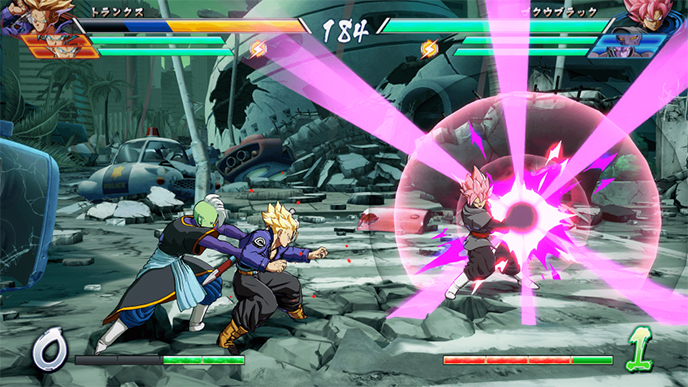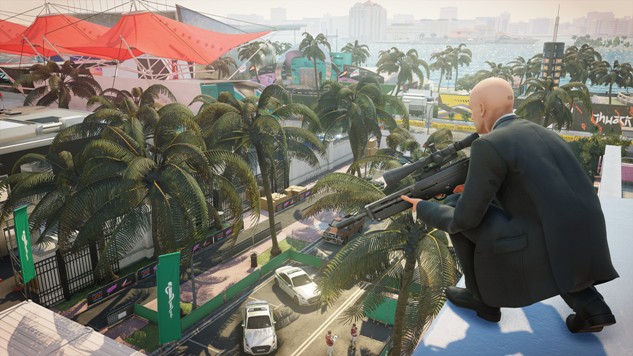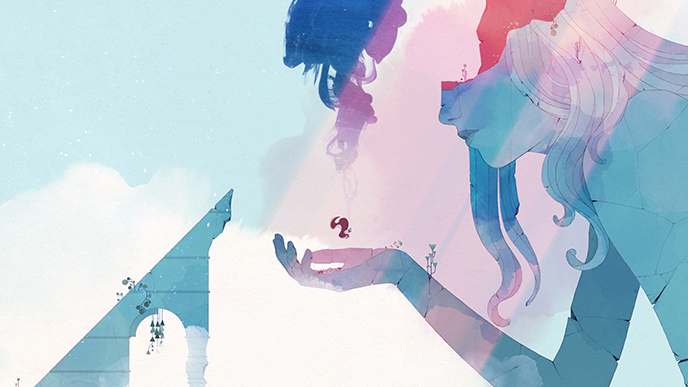
As 2018 draws to a close, PC gaming approaches an interesting place. Itch.io is on the rise, an increasing number of publishers are adopting their own storefronts and game launchers, and even Microsoft has stated a rededication to the platform, foreshadowing a possible end to the digital PC dominance of Steam and its near-monopoly on the market. With the growing emphasis on fair wages and profits distribution in games publishing, 2019 may be the year we see Valve’s cultural and financial grip on the PC games scene loosen, and the accessibility of the medium improve.
But until then, there’s still a lot to celebrate this year in terms of what to play on the PC. From the fighting games to the puzzle games, the decks of a trading ship to the mortuaries of medieval times, here’s the best of what we played on the platform in 2018.
15. Dragon Ball FighterZ
Dragon Ball FighterZ is both the fighting game and Dragon Ball spin-off I never realized I always wanted. The production values are better, and the narrative tension is vastly improved. Given how Dragon Ball FighterZ amps up the drama on existing Dragon Ball storylines, increases engagement by allowing the player to take dialogue sequences at their own pace, and puts a polished, beautiful spin on the old cartoon, this isn’t just my favorite Dragon Ball game. It’s my favorite Dragon Ball anything.—Holly Green
14. Hitman 2
Agent 47 returns with another round of multilayered and minutely detailed puzzle boxes for us to sneak and murder our way through, and as revelatory as 2016’s first go round for this reboot was, the sequel still comes out on top. Hitman 2 eschews the episodic nature of the first season, while still exploiting open world game concepts in a way that’s sprawling but still tightly compact and manageable. Solving its open-ended missions and variety of challenges can be a true test of your ingenuity, and one of the more satisfying times you’ll have with a game this year.—Garrett Martin
13. Wandersong

Given Wandersong’s focus on unity, it’s not surprising that the game always returns to ideas of harmony. It’s a game about music, after all, so the motif fits. And while playing Wandersong, I also felt like harmony was that much closer, that the greatest evils were defeatable if only we could rally together. And that’s a powerful thing for a game about a humble lil bard.—Dante Douglas
12. Life is Strange 2 Episode 1
There’s a lot I like about Life is Strange that returns in Life is Strange 2, particularly the setting and character writing. The attention to detail is marvelous; it is impressive how well Dontnod have been able to recreate the feeling of key Pacific Northwest areas and scenery. One of the most notable things about the original game, outside of its beauty and its interesting rewind mechanic, was its lead characters, Max and Chloe. While I’m sad to see that Life is Strange 2 doesn’t have strong female leads, the story of Sean and Daniel feels equally compelling and important. The first chapter does a great job of establishing the momentum of the game’s narrative arc. The Diaz boys are very easy to root for, and the pain Sean feels as he must protect his younger brother from the truth of their father’s absence is palpable. The more you participate in the bonding experience of being an older brother, the closer the events seem to hit home. By the end of the chapter, I felt genuine fear for the boys and, while I usually don’t waste time speculating on how a piece of fiction will end, I found myself hoping for the best.—Holly Green
11. Donut County

Donut County is entirely about holes and the destruction they can wreak upon a southwestern community when deployed with malice by a clan of scheming raccoons. If you’ve ever wanted to swallow up a pastel desert town full of blocky, adorable animals with sass and quirks aplenty, Donut County is the game for you. Other than the art style and character designs, the best thing about Donut County is the writing. It’s snappy and succinct, quickly establishing the unique personalities of a dozen or so characters, and legitimately funny without trying too hard or being obviously impressed by itself. As cute and surprising as the levels are, I found myself sometimes rushing through them in order to get back underground for the next bit of dialogue and the next character introduction. Like donuts themselves, Donut County will give you a quick, buzzy high, and taste great as you’re chewing on it, but isn’t all that filling.—Garrett Martin
10. Graveyard Keeper

Emerging this past summer as the macabre, campy and deliciously evil counterpart to Stardew Valley, Graveyard Keeper stole our hearts by combining dungeon crawling and crafting to deliver a medieval management sim that’s as fucked up as it is fun. Whether you’re wooing a corrupt priest, making candles from human fat, or just dumping bodies in the river, the busy work in Graveyard Keeper is truly ghastly business. But there are so many games that let you harvest food, and only one that lets you harvest cadavers. For its inventive and dark spin on the genre, this game is, you could say, a keeper, and definitely one of the year’s best.—Holly Green
9. Ni no Kuni II: Revenant Kingdom
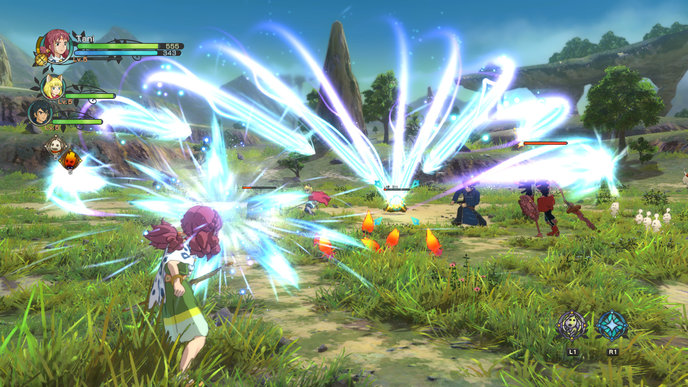
If you pay attention to what we write about here at Paste’s games section you are probably unsurprised by the presence of this game on this list. This is the game, remember, that made me question my lifelong ambivalence towards anime. That’s a massive achievement. Ni no Kuni II is a big leap forward from the middling original for a few reasons, one of which is that it more elegantly unites its gameplay loop with the anime aesthetic of its cut scenes. The camera seamlessly transitions into action when the talking is done and it’s time to take control of your characters, and the new real-time combat scheme also breaks down the off-putting distance found in the first game’s fight scenes. On top of all of that is a surprisingly thoughtful political storyline and characters that are deeper and more human than you might expect from their extremely anime appearances. If you’re remotely interested in role-playing games or anime, you should play this one.—Garrett Martin
8. Deltarune
Deltarune wants to complicate the messages of Undertale. Undertale is utopic, in that it believes strongly that all people have the capability to do good if they are given a chance. It’s the backbone of Undertale’s thematic conclusions with its Pacifist route, where the player eschews as much combat as possible and works to help all citizens of the Underground. Deltarune, in contrast, establishes that there are some evils that cannot be reasoned with. No matter what you (the player) wanted to do, sometimes there are evils that need to be confronted. Undertale almost always had a way out, a way to play that would end with everyone happy and holding hands. Deltarune does not, or at least does not so far.—Dante Douglas
7. Dead Cells
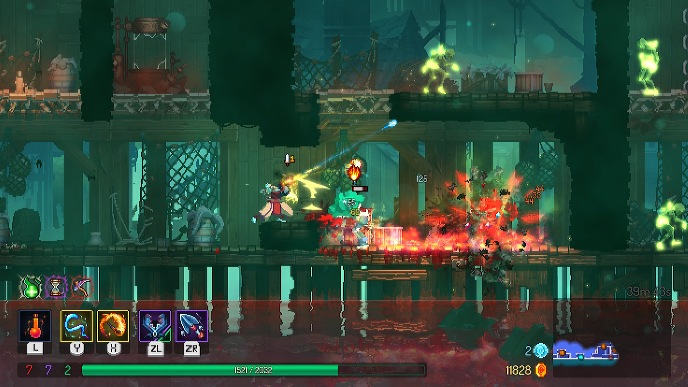
Not content with sheer novelty, Dead Cells importantly taps into the most significant aspect of both of the genres it fuses together. Few games are as addictive as those Metroid-style backtrackers, and perhaps the only thing that has come close this decade is the spate of roguelike platformers that flourished in Spelunky’s wake. Dead Cells beautifully captures what makes both of those genres impossible to put down, uniting the “just one more” drive of a roguelike with the “must keep going” compulsion of a Metroid. It’s a smart, confident piece of work, and anybody interested in either of the genres it builds on should consider checking it out.—Garrett Martin
6. Dandara

Long Hat House’s first game might play fast and loose with history—its hero, Dandara, is a real-life figure from Brazilian history—but its Metroid-style design and unique approach to motion make it compulsively playable. It’s part myth, part dream, all wrapped up in an occasionally psychedelic sci-fi action game heavily indebted to the aesthetics of the ‘80s and early ‘90s, and one of the best new games of the year.—Garrett Martin
5. Celeste

Matt Thorson’s follow-up to Towerfall employs a familiar aesthetic and language from videogames past to tell a story about mental health and self-actualization, using the mountain the game is named after as a representation of a young woman’s struggles with depression and self-doubt. Celeste is an inspired triumph, with art that recalls the early ‘90s, and requiring a precision to navigate its levels that comes straight out of the heyday of platforming. The vibrant use of color and warm, stylistically varied score elevate the retro aesthetic beyond mere homage. It’s a touching and occasionally insightful depiction of what it’s like to live with anxiety and depression.—Garrett Martin
4. Minit
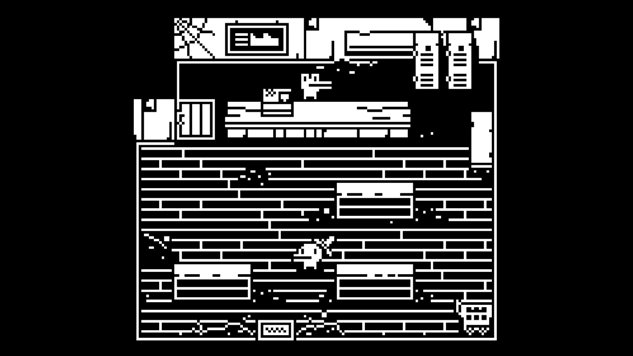
Minit is an adventure with a twist and also a critique of capital split up into tiny bite-sized chunks and told through adorable animals in a sparsely drawn fantasy land. After enough stop and start minutes you’ll realize a factory is running roughshod over this place, polluting the land and working some of its employees to the bone while firing others whose jobs can now be done by machines. Behind it all is a maniacal manager prioritizing productivity over all else. After all these minutes and all these lives the true story reveals itself, and to reach the end you have to collect item after item, life after life, to eventually have the skills necessary to grind the factory to a halt. Even after realizing this it’ll take many minutes and many lives to finish everything you know you need to do, tiny bits of incremental progress in-between passages of rote, mundane, repetitive busy work. If it starts to feel like a job, well, maybe that’s the game’s point. The factory is Minit itself, its employees all of us who play the game, and its dictatorial boss the developers who put us through these paces again and again and again in hopes of the smallest iota of progress. Like the unending and uncaring work shifts that eat up our days until we die, we expend most of our vital energy redoing the same soul-killing nonsense over and over. It is one of the most effective metaphors for the exploitation of the working class seen in videogames. The minutes pass, we experience multiple tiny deaths every day doing the job we’re expected to do. And we press a button, and we do it again.—Garrett Martin
3. Into the Breach

Into The Breach is interested in you, as a player, gaining skills and developing new ways of thinking about the puzzle-like battles it puts in front of you. The island regions threatened by the Vek are small tactical boards, and you control a small cohort of giant, Pacific Rim-style robots who are there to smash and push their enemies around. Critically, these giant robots have mass, and Breach is very much committed to showing that big stuff smacking into other things has real effects. The idea is to prevent the Vek from attacking civilian buildings, prevent them from killing your mechs, and to kill them. Importantly, the game’s concerns are in that order.
That’s the puzzle-y part of the game. Each map has a turn counter that’s slowly ticking down, and at the end of it the remaining Vek will disappear. Into The Breach’s most interesting qualities come from the fact that you do not have to kill your enemies to win the game. You don’t have to annihilate each and every Vek on a time limit, and you don’t ever have to put your mechs in too much danger. You just need to be able to use your punching, shooting, artillery-firing robots to keep scooching enemy Vek around until the game is over.—Cameron Kunzelman
2. Gris
Similar to last year’s Gorogoa, Gris is a latecomer in terms of 2018 releases, but also too smart and beautiful to ignore for our year end round-up. Written as a metaphor for grief and loss, the game is a basic puzzle platformer, but designed with an intuitiveness that is immensely gratifying in its smoothness and fluidity. Channeling a deep sense of isolation and melancholy, the game’s stunning environments are awash with the rich and warm textured tones of a watercolor painting, with the finer pen and ink details of a storybook illustration, bringing to mind games like Machinarium in its style and artistry. At the risk of sounding hyperbolic, I’m not sure I deserve a game like Gris. It’s one of the loveliest things I’ve ever played. —Holly Green
1. Return of the Obra Dinn
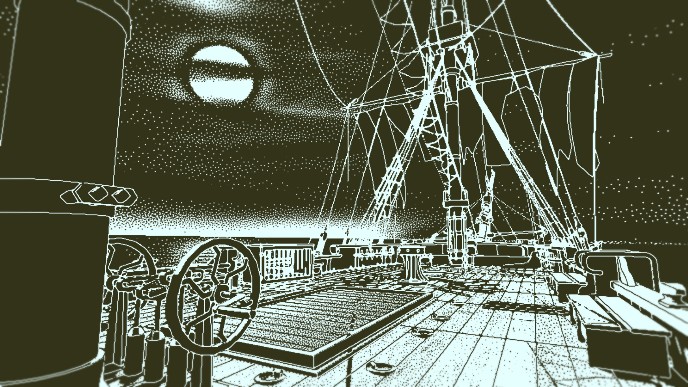
Lucas Pope’s Return of the Obra Dinn is a game about violence cleansed of meaning. In that way, it feels like a tonal companion to his previous game, Papers, Please, a game about meaning cleansed of violence. On the Obra Dinn, you will see every death intimately, and as a person, an investigator, you will naturally thread the storylines and see the ways that each death led to another. But that’s not really what insurance agents need. They just need the facts.
Those facts were the backbone of the East India Company, after all. If they could cleanse their own history of the people and the context, the profits would stand alone. And so, just like in Papers, Please, at the end of the day you are left with numbers and figures. Instead of salary, it is deaths, payouts and fines. Human lives reduced to another method for the Company to profit, even in death. Layers of greed cascading down the entire colonial system, encased in one dingy, storm-bitten boat.—Dante Douglas
